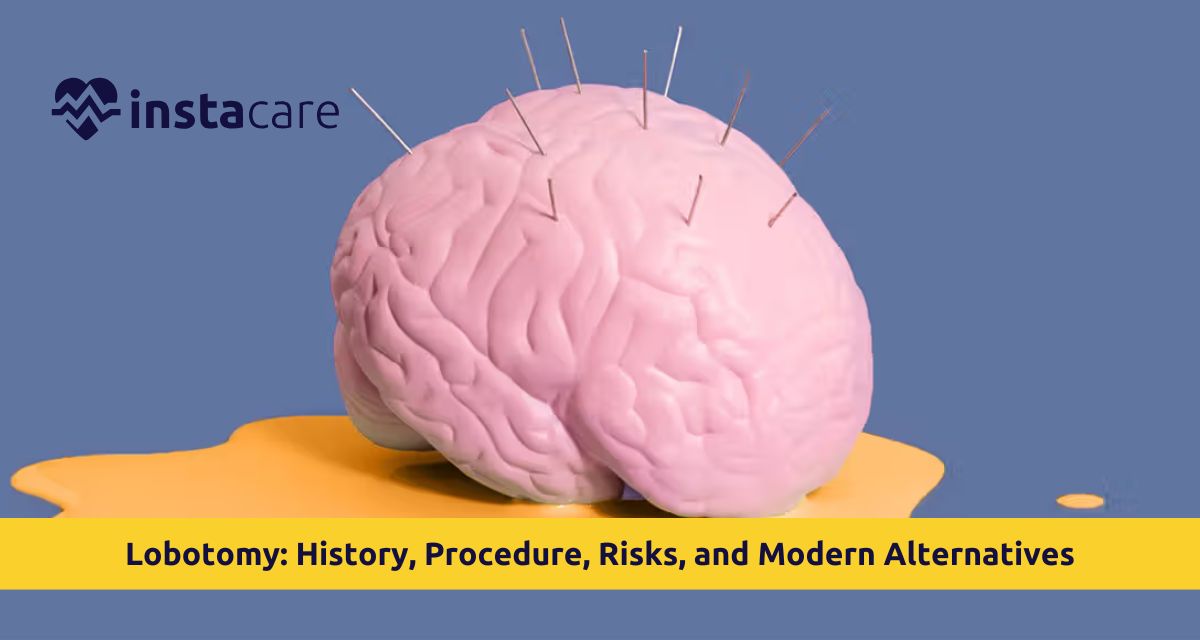What is Lobotomy?
What Includes The Lobotomy Procedure?
- Classic Prefrontal Lobotomy: The initial treatment involved drilling holes in the cranium. Physicians used a specialized cutting instrument known as a leucotome to sever white matter fibers that connected the prefrontal cortex with the rest of the brain. Surgeons used sweeping strokes to destroy as many connections as they could.
- Transorbital Lobotomy: Dr. Freeman developed this "ice pick" method that did not include drilling into the skull. He utilized a sharp object and inserted it through the eye socket, across the eyeball, and into the brain. He would insert it back and forth to kill brain tissue. It was a procedure that only lasted for minutes and was performed with local anesthesia.
- Subcaudate Tractotomy: This next intervention was aimed at individual brain circuits using more sophisticated surgical techniques. It tried to minimize the mass destruction of previous psychosurgery history operations.
Risks and Effects of Lobotomy
- Immediate Body Risks: The patients had to undergo intense surgical complications such as intracranial hemorrhage, seizure, infection, and death. The primitiveness of initial techniques made these dangers incredibly high.
- Personality Changes: The most serious lobotomy side effects were complete changes in personality. Patients generally lost the capacity for feeling or expression of emotion, imagination, or close relationships. They most often became childish, lacking responsibility for themselves.
- Damage to Thinking: Frontal lobotomy often caused serious damage to thinking. Patients had difficulty in remembering, concentrating, and problem-solving. Many could not work or take care of themselves.
- Emotional Blunting: Although the treatment may reduce agitation or anxiety, it would generally dampen all emotion. Patients became emotionally flat, and they could not feel joy, love, or even proper fear.
- Physical Complications: Seizure disorders, motor impairment, and speech and coordination impairments were long-term consequences of lobotomy. Some patients needed lifetime care.
- The lobotomy recovery process after lobotomy was incomplete or impossible in most instances. Unlike with other surgeries, brain damage by lobotomy was permanent and irreversible.
Read More: 8 Silent Symptoms of Brain Tumor that You Need to Know
Ethical Abuses of Lobotomy
- Lack of Informed Consent: The majority of patients and families were not well-informed about the lobotomy risks and complications. Physicians used to introduce it as a harmless, straightforward operation without discussing permanent personality alterations.
- Targeting Vulnerable Populations: Lobotomy for mental illness was inappropriately used over minorities, females, and low-income patients. Procedures were performed with many of them to render the patients easier to handle instead of assisting them in recovering health.
- Shortage of Scientific Evidence: The lobotomy success rate was never scientifically explored. Physicians based their assessments on subjective, not scientific, measurements of patient improvement.
- Misuse of Power: A number of physicians performed hundreds of lobotomies with minimal control. The simplicity of the transorbital method caused assembly-line procedures with minimal evaluation of individual patients.
- Alternative Therapies Neglected: Various beneficial medications and therapies were routinely available but not attempted before the decision to have a prefrontal lobotomy. The operation became a first option instead of a last alternative.
Modern Alternatives to Lobotomy
- Lobotomy today is now practically unheard of, having been supplanted by safe and effective lobotomy alternatives that treat mental illness without damaging the brain.
- Drugs for Psychiatry: Antidepressants, antipsychotics, and mood stabilizers used today can successfully treat symptoms previously meriting lobotomy in psychiatry. These drugs stabilise the brain chemicals instead of killing off brain tissue.
- Psychotherapy: Talk therapies of several types, such as cognitive-behavioural therapy and psychoanalysis, educate patients to cope with and comprehend their mental illnesses. These treatments address the causes instead of the symptoms.
- Electroconvulsive Therapy (ECT): Newer ECT is much safer than the earliest lobotomy surgery. Modern ECT employs controlled electrical stimulation to cure extreme depression and other illnesses with few side effects and no long-term brain damage.
- Deep Brain Stimulation: It is the new method that uses implanted electrodes to stimulate areas of the brain. Unlike lobotomy, it's not only reversible but adjustable, and so doctors can change treatment as needed.
- Transcranial Magnetic Stimulation: It is a non-surgical treatment that uses magnetic fields to activate brain activity. It can treat depression and other diseases without surgery or permanent alteration.
- Comprehensive Care Programs: Modern psychiatric treatment combines a number of approaches, including medication, therapy, social support, and changing lifestyle. This multi-pronged approach cures the whole person instead of merely assaulting brain tissue.
Conclusion

